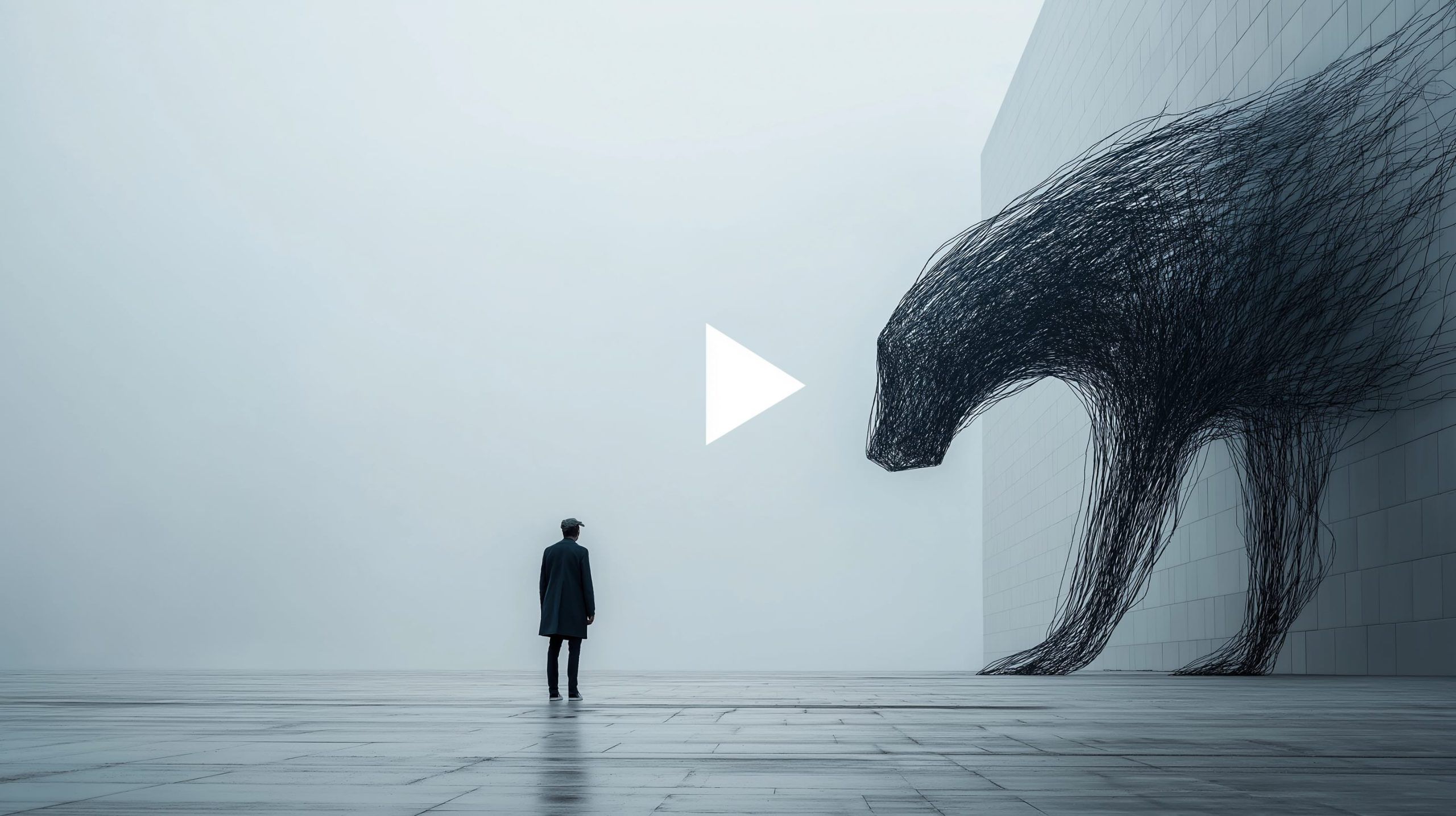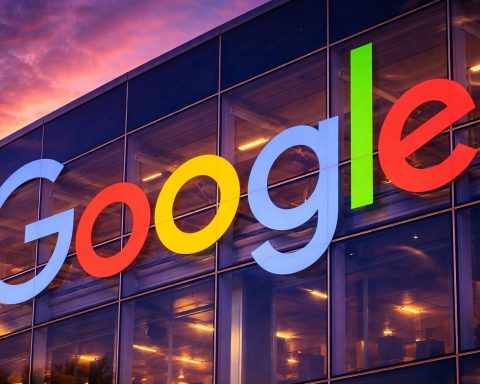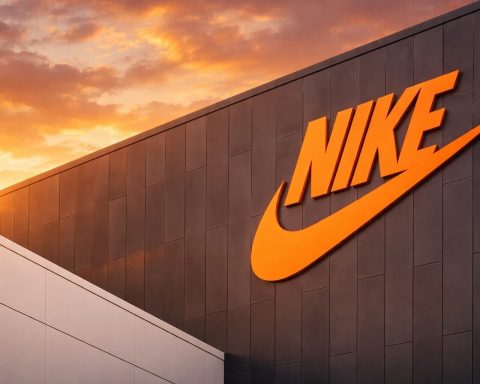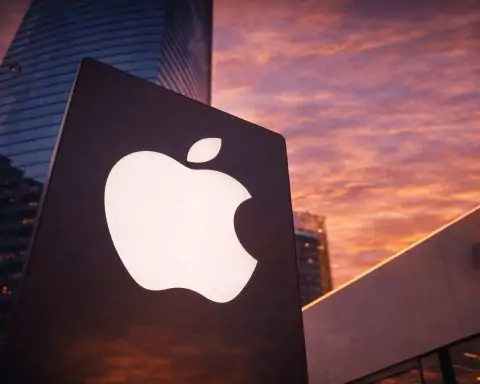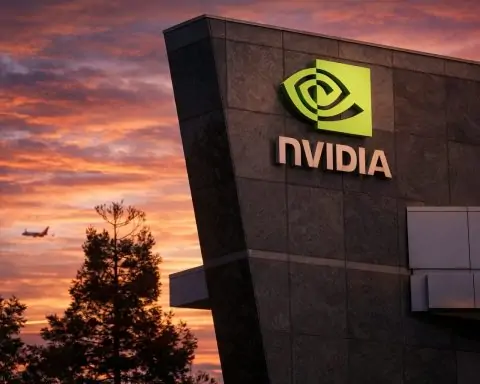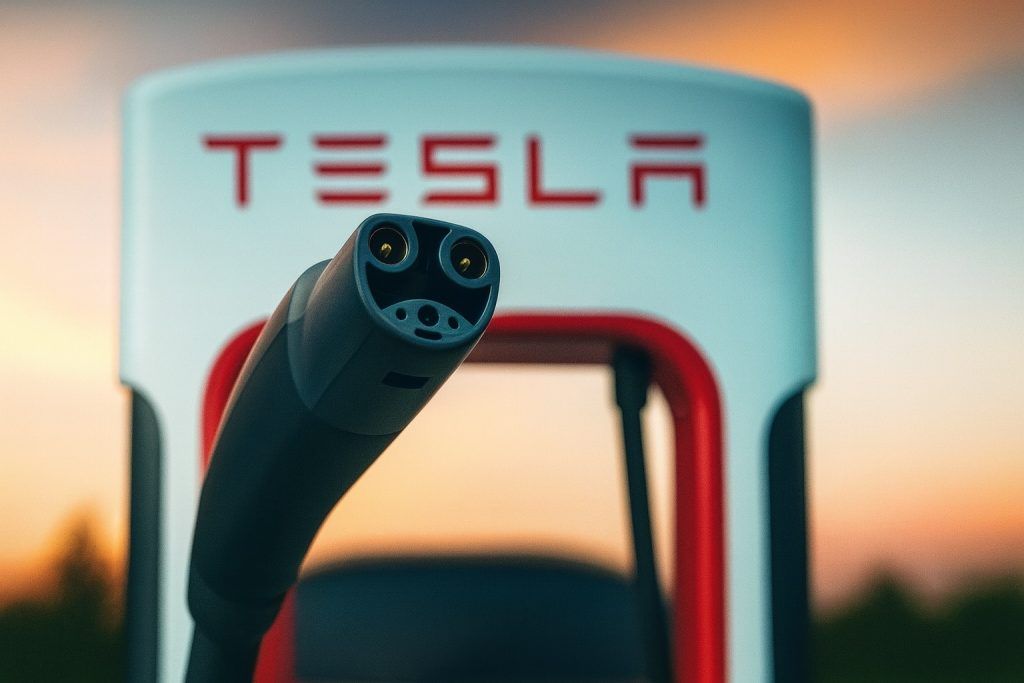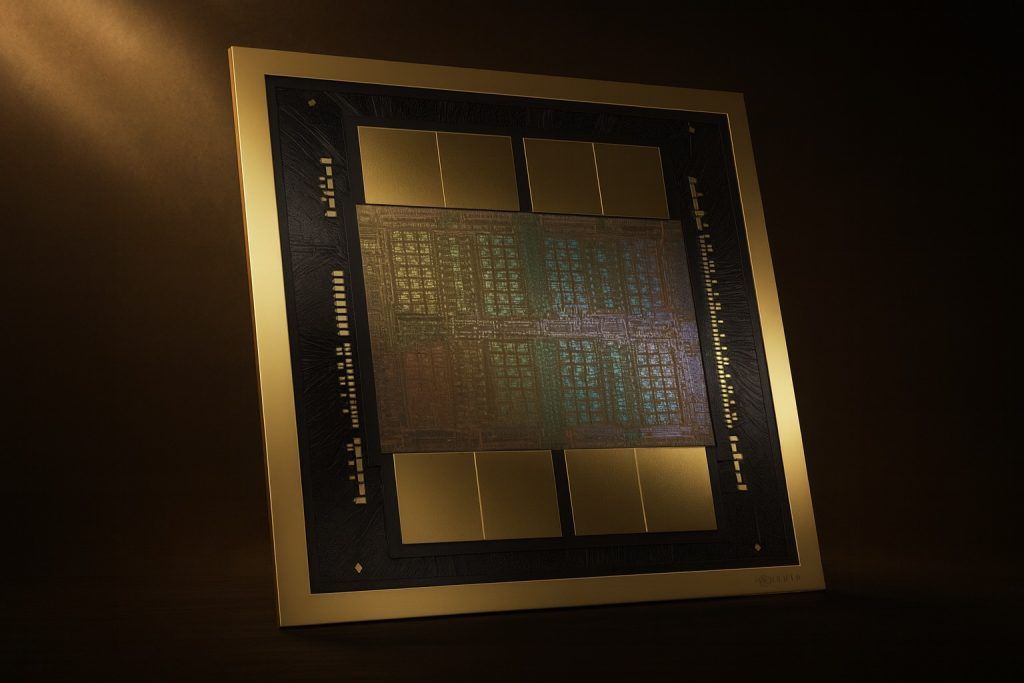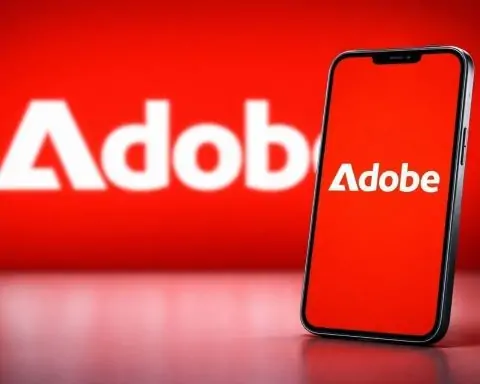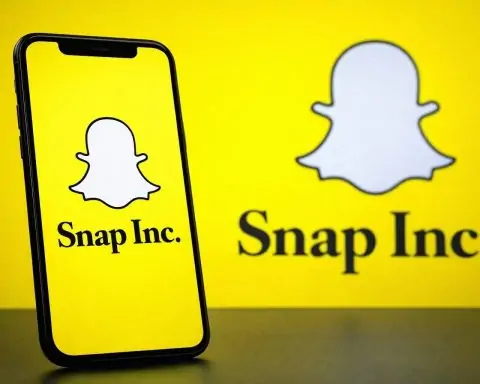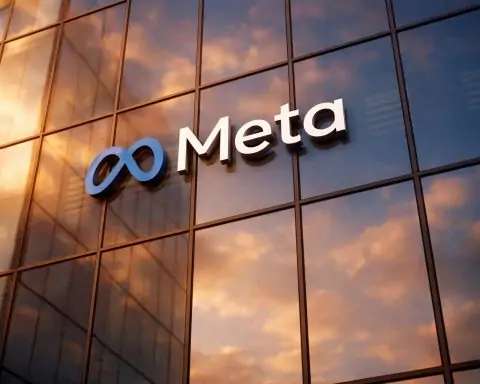- Sora can generate videos up to 20 seconds at 1080p for ChatGPT Pro users and 10 seconds at 720p for ChatGPT Plus, with a research version capable of about 1 minute.
- Sora outputs at 24 fps and supports widescreen, vertical, and square aspect ratios, with visible watermarks by default.
- Sora excels at photorealistic imagery and coherent motion, preserving object permanence and realistic physics better than earlier AI video models.
- Sora is integrated into the ChatGPT interface with Remix, Storyboard, Re-cut, and Loop features for editing within the same workflow.
- Veo 3 can produce eight-second videos with native audio, including sound effects and spoken dialogue, and can output up to 4K resolution.
- Veo 3 supports both text-to-video and image-to-video, and includes Flow for chaining shots, with two variants: Veo 3 Fast and the full Veo 3.
- Gen-4 generates five- or ten-second clips at 1280×720 (720p) by default, at 24 fps, and can upscale to 4K after generation, but requires a starting reference image to maintain consistency.
- Gen-4 emphasizes consistency and control, allowing tweaking of aspect ratio and seed, and integrates with Runway’s editing tools and API.
- Access and pricing vary by product: Sora is accessed via ChatGPT with Plus for basic generation and Pro for higher limits; Veo 3 is available to Google AI Pro/Ultra subscribers and via Vertex AI public preview; Gen-4 is available on Runway with a Free plan of 125 credits and paid Standard, Pro, and Unlimited tiers.
- All three models cannot yet produce long-form content in a single generation, and each carries limitations such as content filters, watermarks, licensing concerns, and occasional generation glitches.
AI video generation has leapt from science fiction to reality in 2025. Three cutting-edge tools are leading this revolution: OpenAI’s Sora, Google’s Veo 3, and Runway’s Gen-4. These text-to-video models can turn simple prompts into moving pictures, allowing creators to produce short films, adverts, and animations without a camera crew. In this in-depth comparison, we’ll explore each model’s technical capabilities, standout features, limitations, and how they stack up against each other. From ultra-realistic visuals to integrated sound and unprecedented creative control, Sora, Veo 3, and Gen-4 are pushing the boundaries of video creation. Which one is poised to dominate 2025? Let’s find out.
Technical Capabilities and Model Strengths
Each of these AI video generators boasts impressive technical specs and strengths, though they differ in focus:
- OpenAI Sora: Sora can generate videos up to 20 seconds long in 1080p resolution (for ChatGPT Pro users) [1] [2]. ChatGPT Plus users get up to 10-second clips at 720p [3] [4]. Under the hood, the research version of Sora is capable of ~1 minute outputs [5], but current user-facing limits are shorter to ensure quality and affordability. Sora excels at photorealistic imagery and coherent motion – it “understands not only what the user has asked for in the prompt, but also how those things exist in the physical world” [6]. This means it preserves object permanence and realistic physics better than earlier-gen models, reducing the warping or morphing artifacts that plagued older AI videos. Sora can take text, image, or video inputs and produce a new video, enabling functions like extending existing footage or mixing generated elements [7]. It outputs at 24 fps and supports widescreen, vertical, or square aspect ratios [8], with visible watermarks embedded by default for safety [9]. Overall, Sora’s strengths lie in its high image fidelity, strong prompt adherence, and integration into a versatile AI platform.
- Google Veo 3: Veo 3 generates eight-second videos and is unique in natively producing audio alongside the visuals [10] [11]. Simply describe a scene (and even include dialogue or sound cues), and Veo will create the video with sound effects, ambient noise, and spoken lines to match [12] [13]. This audio-visual generation is a key differentiator – imagine an owl flying through a forest with rustling leaves and the owl hooting, all generated from a prompt [14] [15]. Veo 3 delivers best-in-class quality in terms of realism, motion physics, and following the prompt accurately, according to Google DeepMind [16]. Notably, Veo 3 is capable of outputting up to 4K-resolution video [17], giving it an edge for high-fidelity needs (though high resolution may be limited to certain subscription tiers or Cloud usage). It also supports both text-to-video and image-to-video: you can provide a text description or an initial image (even a photo) as a starting point [18]. Veo 3’s motion coherence is excellent – it was redesigned to incorporate “real world physics,” resulting in more natural movements (objects obey gravity, limbs move believably, etc.) [19] [20]. Human evaluators have rated Veo’s output as state-of-the-art compared to other models [21]. In short, Veo 3’s strengths are ultra-realistic short clips with synchronized audio, making it a powerful tool for dynamic video storytelling.
- Runway Gen-4: Gen-4 specializes in consistency and control across video frames. It produces videos in 5 or 10 second durations at 1280×720 resolution (720p) by default [22] [23], with the option to upscale to 4K after generation for higher-definition output [24] [25]. The frame rate is 24 fps [26]. A distinguishing feature is that Gen-4 requires an input image as the first frame of your video [27] [28] – you provide a reference image of a character, object or scene, and Gen-4 will animate it according to your text prompt. This design lets Gen-4 maintain precise visual consistency: characters retain the same appearance and style from frame to frame and across scenes, since the model can “utilize a single reference image” to keep the subject identical in every shot [29] [30]. It’s essentially an image-to-video model geared towards continuity. Gen-4 shines at preserving the “look and feel” of a world – it can generate consistent characters, locations and objects across scenes while honoring the prompt’s style and cinematography [31] [32]. The output quality is aimed at being “production-ready,” with realistic motion and strong language understanding in the prompts [33]. In practice, Gen-4 delivers highly dynamic shots with good physics simulation (e.g. convincing water splashes, natural camera movements) [34] [35]. Another strength is user control: Runway’s interface allows you to tweak aspect ratio, seed, and other settings easily, and even blend multiple generated clips or apply different visual styles (like making it look like stop-motion or film noir) [36] [37]. Overall, Gen-4’s forte is enabling creators to craft coherent scenes and characters, making it ideal for narrative storytelling where consistency is key.
Key Features and Differentiators
Each model offers unique features that set it apart:
- OpenAI Sora – Creative Suite Integration: Sora isn’t just a model, it’s integrated into the ChatGPT interface with a host of creative tools. Through the Sora web app, users can Remix existing videos by replacing or removing elements via text (for example, swap the background or an object in a clip) [38]. There’s a Storyboard feature that lets you lay out a sequence of scenes on a timeline and generate a coherent multi-shot story [39]. Sora can also Re-cut a video by finding the best frame to extend a scene, and Loop videos into seamless GIF-like repetitions [40] [41]. It even has style presets (e.g. “Cardboard & papercraft” style to render everything as if made of paper) for stylized outputs [42] [43]. These features make Sora a one-stop creative tool – you can generate a video from text, then edit and refine it all within the same interface. Another differentiator is Sora’s prompt fidelity: it was noted for capturing detailed scene descriptions with minimal glitches. For instance, Sora is able to generate “complex scenes with multiple characters, specific types of motion, and accurate details” that align closely with the prompt [44]. Compared to others, Sora’s differentiator is this combination of high-quality generation with an easy UI and editing toolkit, all available to ChatGPT subscribers.
- Google Veo 3 – Native Audio and Photo Animation: Veo 3’s headline feature is native audio generation. It doesn’t just produce silent videos – it can output sound effects, background ambience, and even spoken dialogue to match the visual content [45] [46]. For example, if your prompt describes an old sailor speaking on a ship, Veo will generate the character’s voice line and the sound of ocean waves in sync with the video [47] [48]. This effectively turns Veo into a tiny “AI film crew” handling visuals and sound design together. No other mainstream model (Sora or Gen-4) currently does this. Another key differentiator is photo-to-video capability – Veo 3 (via Google’s Gemini app) allows users to upload a still image and animate it into an 8-second video clip [49] [50]. This feature can bring photos to life, for example turning a drawing or a photograph into a moving scene with sound. Google has also introduced Flow, an AI filmmaking tool that works with Veo, enabling creators to string together multiple shots and craft longer stories in a guided way [51] [52]. Under the hood, Google offers two variants: Veo 3 Fast (optimized for speed and cost, for quick drafts) and the full Veo 3 model (highest quality) [53] [54]. Both support audio; the Fast model is just quicker and used in the Google Cloud Vertex AI environment for developers [55]. Summing up, Veo 3’s differentiators are its audio generation, prompt accuracy, and integration into Google’s ecosystem (Gemini app for consumers and Vertex AI for developers). It’s the go-to if you need AI-generated videos with sound or want to easily animate a single image.
- Runway Gen-4 – Consistency and Film Production Focus: Gen-4’s standout feature is consistent character and object rendering across a video or even multiple videos. By supplying a reference image, you essentially “cast” an actor or design an object, and Gen-4 will keep that subject looking the same in every frame and shot [56] [57]. This addresses a longstanding issue in AI video generation: characters morphing or changing appearance unintentionally. Gen-4 tackles this by design, making it uniquely suited for narrative content (e.g. ensuring the protagonist in scene 1 looks the same in scene 5) [58]. Another key feature is camera control and perspective shifts – you can generate a scene from different angles by providing new camera instructions while keeping the underlying world consistent [59] [60]. Runway has demonstrated that you can take a static scene and have Gen-4 regenerate it from a new viewpoint (say, a wide shot then a close-up) without losing continuity. Additionally, Gen-4 integrates with Runway’s suite of video editing tools. Creators can use Gen-4 in combination with Gen-1 or Gen-3 (Runway’s other models) to, for example, “Restyle” a Gen-4 video with a different artistic style or do in-painting on video frames [61]. There’s also an API for Gen-4, which allows developers or studios to incorporate Gen-4 into their pipelines (Runway provides an API for pro users) [62] [63]. Notably, Runway is positioning Gen-4 as a tool for professional content creation – they partnered with the Tribeca Film Festival 2024 and even Lionsgate to explore AI in filmmaking [64]. Gen-4 supports various aspect ratios (16:9, 9:16 vertical, 1:1 square, etc.) so it’s flexible for different mediums (film, TikTok, etc.) [65] [66]. In summary, Gen-4 differentiates itself with unprecedented control over consistency and style, making it appealing for filmmakers and animators who need reliability and fine control over the generated content.
Limitations and Known Issues
Despite their breakthroughs, each system has limitations to be aware of:
- Sora Limitations: OpenAI openly acknowledges that today’s Sora “has many limitations.” For one, it “often generates unrealistic physics and struggles with complex actions over long durations” [67]. In practical terms, while Sora’s short clips are usually coherent, if you try to push it toward its upper duration limit (20+ seconds) with a complex scene (e.g. multiple people interacting dynamically), it may falter – objects might clip through each other, motions can become unnatural, or the scene loses consistency. Sora’s outputs are currently capped at relatively short durations (and Plus users are further limited to 10s and lower resolution), which means you cannot yet generate a full minute continuous video at high quality through the public interface. Another limitation is access control: at launch, Sora access was restricted by geography and age – it wasn’t initially available in the UK/EU and is not available to users under 18 [68] (likely due to regulatory and safety concerns). By mid-2025, OpenAI began rolling it out in Europe [69] [70], but some regions may still face delays. Sora also has strict content filters; for example, it blocks “particularly damaging forms of abuse, such as child sexual abuse material and sexual deepfakes,” and limits uploads of real people’s images pending better deepfake safeguards [71]. This means the model might refuse certain prompts or image inputs if deemed sensitive (which, while socially responsible, is a creative limitation). Finally, Sora’s videos carry visible watermarks and hidden metadata to mark them as AI-generated [72] – a good safety feature, but it might be seen as a drawback for those who wanted to use clips covertly (Pro users can download without watermark, but the metadata remains) [73] [74]. In essence, Sora is cutting-edge but still “early” – you might encounter occasional visual glitches (especially in fast motion or intricate physics) and will be constrained by usage limits and content policies as the technology matures.
- Veo 3 Limitations: Google’s Veo 3 produces striking results, but it comes with its own set of caveats. The most immediate is the 8-second length cap – Veo 3 is optimized for very short clips (think of it as a brilliant sprinter, not a marathon runner). If you need a longer sequence, you’ll have to stitch multiple 8s clips together, which can be cumbersome for storytelling beyond a few moments. Another limitation is that access to Veo 3 currently requires a subscription or enterprise use. It’s available through the Gemini app with a Google AI Pro or Ultra plan [75], which have a cost (Google hasn’t publicly listed the price in the announcement, but these are premium tiers). This means casual users can’t freely play with Veo 3 unless they’re in the paid program or have Google Cloud credits. On the developer side, while Google has integrated Veo into Vertex AI (their cloud AI platform), it was only in public preview as of August 2025 [76] – which might involve waitlists or project approvals. Content and safety limitations on Veo are notable: Google has implemented strict filters and even an approval system for certain kinds of outputs. For example, Veo may require your Google Cloud project to be explicitly approved for generating people or children in videos [77]. If your prompt involves a realistic person or a child, it might throw an error unless you’ve gone through a vetting process (reflecting Google’s caution against deepfakes or sensitive content). This can be a hurdle for creators wanting to include human characters freely. Additionally, while audio generation is a fantastic feature of Veo, it introduces complexity – in some user reports, the generated voices can sound a bit robotic or the timing slightly off if the scene is very complex (this is an area still improving, as generating perfectly lip-synced, emotionally nuanced speech is very hard). Veo’s short-form focus also means it’s designed for “shots – not full scenes” [78]. Google’s own documentation suggests if you want a narrative longer than a few seconds, you’ll need to plan it out in segments [79]. So, while Veo 3 is extremely advanced in quality, users should be aware of its brevity and the guarded access. Lastly, similar to OpenAI, Google watermarks all Veo videos (with a visible badge and an invisible SynthID watermark embedded in the pixels) to flag them as AI-made [80] [81]. This is great for transparency, but it’s a reminder that these tools are carefully managed – you’re not going to slip a Veo 3 video past any savvy observer or platform. In summary, Veo 3’s limits are its very short duration, subscription requirement, and heavy content moderation, which together ensure high-quality, safe outputs but constrain some uses.
- Runway Gen-4 Limitations: Gen-4 is powerful for consistency, but it imposes some workflow constraints that differ from the others. The biggest is that Gen-4 is not pure text-to-video – it mandates an input image to start a generation [82] [83]. For users who just want to type a prompt and get a video, this adds an extra step: you need to supply or create a suitable keyframe first (Runway suggests using their text-to-image (Frames) tool or any image as a starting point). This requirement can be limiting if you’re not sure what your subject should look like, or if you want the AI to imagine everything from scratch. Another limitation is the length and scope: like the others, Gen-4 deals in short clips – 5 or 10 seconds max per generation [84] [85]. If you want a 30-second story, you’ll have to generate it piecewise and edit it together externally. In fact, early users found that to make a multi-scene narrative with Gen-4, they had to manually generate separate segments and combine them in a video editor [86] [87]. Runway has teased the ability to maintain characters across clips, but as one reviewer noted, “the fundamental tools required to keep character consistency [across longer stories] aren’t available… as of this writing”, making Gen-4 essentially “just an image-to-video model” in practice right now [88]. In terms of output, Gen-4’s base resolution is 720p (which is lower than Sora’s or potentially Veo’s native output) – while you can upscale to 1080p or 4K, upscaling can only add so much detail; the native generation might appear slightly soft or low-detail compared to something natively generated at higher resolution. Users have also reported occasional inconsistencies and glitches despite Gen-4’s focus on stability. For example, the model can struggle with very intricate movements or interactions – one test found it had trouble rendering a character climbing into a painting smoothly [89] [90]. Another common issue is with generating human anatomy in motion: “Gen-4 still faces challenges when dealing with limbs, especially with complex physical actions,” where arms or legs might deform strangely [91] [92]. These glitches are “relatively rare” [93], but they do highlight that Gen-4 isn’t infallible, especially if you push it with highly complex prompts. There’s also a learning curve: to get the best out of Gen-4, you often need to iteratively tweak prompts and settings. New users have noted it’s not always plug-and-play – “most people fail to get what they want” on first tries and need to learn how to speak the model’s “language” for optimal results [94] [95]. Finally, cost and speed: Gen-4 is credit-based, and by default a 10s high-quality clip costs 120 credits (which on the Standard plan is nearly 20% of your monthly credits) [96] [97]. The model runs on heavy cloud GPUs, so while the new Turbo mode speeds it up, generating videos can still take tens of seconds to minutes of processing. In short, Gen-4’s limitations include its short clip length, need for a starting image, occasional visual hiccups, and the effort required to piece together longer stories. It’s a tool that may demand more hands-on work (and expense) from the user compared to the more automated approaches of Sora and Veo.
All three models also share some common limitations: none of them can yet produce long-form content in one go – you won’t be generating a 5-minute short film in a single generation. They are all focused on short clips for now. Each also operates under ethical guidelines and restrictions (no violent or sexual abuse content, no unauthorized celebrity deepfakes, etc.), which is important to ensure responsible use but can frustrate users who hit those guardrails. And while the progress is astounding, we are still in the early days of AI video generation – as one AI creator put it, we’re still “worlds away from being able to imagine something, put it into words, and see it come to life” seamlessly [98]. There’s plenty of room for improvement in coherence, fidelity, and ease of use.
Use Cases and Applications
Despite the current limitations, Sora, Veo 3, and Gen-4 are already powering a variety of creative and practical use cases. Here’s how different industries and creators are tapping into these tools:
- Advertising and Marketing: Brands are always looking for eye-catching visuals, and AI video generators offer a quick way to produce promo clips. For example, a marketer could use Sora to generate a 15-second stylized product montage based on a prompt (e.g. “a sneaker bursting into neon flames while rotating”) without hiring a production studio. The realism Sora provides and the ability to target a specific aesthetic (via style presets or detailed prompts) is ideal for social media ads. Google Veo 3, with its audio, can produce short video ads complete with background jingle or narration. Imagine an ecommerce demo where an AI voice briefly describes a product while the video (generated by Veo) shows the product in action – all created from a single prompt. Google even suggests Veo for “narrated product demos” as a quick solution for marketing teams [99]. Runway Gen-4 appeals to ad creatives who want complete control: one can generate a consistent mascot character and reuse them in multiple campaign shots by providing the same reference image. Its ability to seamlessly blend into live-action or VFX content (Runway touts Gen-4 as flexible enough to “sit beside live action” footage [100]) means marketers can integrate AI-generated sequences into real video shoots, saving cost on locations or actors for brief segments.
- Filmmaking and Pre-visualization: The film industry is fascinated and a bit stunned by these tools. OpenAI’s Sora made waves in Hollywood when early previews came out – it “stunned film-makers” in 2024 [101]. The most dramatic example: film mogul Tyler Perry reportedly paused a $800 million expansion of his Atlanta studio after seeing Sora, suggesting that AI might soon make “building sets or traveling to locations unnecessary” [102]. That’s a remarkable reaction, underscoring how these AI models can generate convincing environments or backgrounds that could replace costly physical sets [103]. Directors and pre-vis artists are already using these tools to storyboard ideas. Instead of hand-drawn storyboards or crude animatics, one can prompt Sora or Gen-4 to “show a wide shot of a desert at dawn with two characters walking”, and get a moving storyboard to communicate their vision. Runway Gen-4 is explicitly targeting this use – their partnership with Tribeca Festival and Lionsgate is aimed at exploring how AI can aid the film pre-production process [104]. Gen-4’s consistency ensures that a director’s imagined characters stay on-model across different test scenes, which is invaluable for planning a film’s look and feel. Google’s Flow (with Veo 3) is another example: it’s an AI-powered editing tool where filmmakers can draft a sequence of shots, generating each with Veo’s video+audio, to prototype a story before any real shooting happens [105]. For indie filmmakers or even big studios, this can accelerate the creative process and allow rapid iteration on ideas. There are already short films and music videos made entirely with Gen-4 [106], demonstrating that these models can handle narrative when multiple clips are artfully chained. We’re also seeing interest in using AI videos for VFX and post-production – for instance, generating an AI background plate with Sora to green-screen behind actors, or using Gen-4 to create elements that would be expensive practical effects (like a quick clip of a futuristic city skyline). The key takeaway: in filmmaking, these AI models are emerging as tools for concept development, pre-visualization, and even final effects, shrinking the gap between imagination and on-screen result.
- Content Creation for Social Media: Online creators on platforms like YouTube, TikTok, and Instagram are embracing AI-generated videos for fresh content. Sora being built into ChatGPT makes it accessible to YouTubers or influencers who are already ChatGPT users – for example, a vlogger could ask Sora for a cool B-roll: “Generate a slow-motion video of paint splashing in the air in 4K” to use within a project [107]. In fact, OpenAI initially rolled out Sora access to select visual artists and designers to see how they’d use it creatively [108]. One early user, a 25-year-old digital artist, used Sora to create a two-minute video of models wearing bioluminescent fashion designs and said the tool would “open a lot more doors for younger creatives” [109]. This highlights how solo creators can produce high-concept visuals (fashion, art, sci-fi scenes) that would normally require a whole crew. Veo 3 lends itself to meme creators and storytellers on social media – its ability to generate funny audio-visual skits (like the example Google gave of a detective duck quacking an interrogation line [110]) means a single person can create a mini sketch complete with character voices. Imagine TikTok creators generating quick comedy clips where the characters and voices are all AI; Veo 3 can do that in seconds. The fact that Veo can animate photos also spawned trends where people animate classic paintings or personal photos into short videos, which are perfect for sharing. Runway Gen-4 is used by creative TikTokers to push visual boundaries – for instance, someone might take a regular video they shot and use Gen-4 to “re-imagine” it in a fantasy style (via Gen-4’s reference + prompt mechanism). While Gen-4 isn’t as plug-and-play for casual users, those with some technical or artistic skill have made music video sequences, trippy animations, and conceptual short films with it [111] [112], often sharing the results on Twitter or Reddit to wide-eyed audiences. In short, social media is seeing a wave of AI-crafted video content – from breathtaking art visuals to humorous clips – enabled by these three tools.
- Corporate and Education Uses: Companies are exploring AI video generators for internal content and educational materials. Corporate communications teams, for example, can use Sora or Gen-4 to quickly create illustrative videos for presentations – say a hypothetical scenario video showing a future technology, or a visualization of a concept – without outsourcing to an animation firm. The results might not be Pixar-level yet, but for many use cases a 10-second conceptual video is extremely useful (and far quicker/cheaper). Training and e-learning content can also benefit: instructors could generate short demonstration videos via Veo 3 to include in slides (complete with narration thanks to AI audio). Instead of searching stock video libraries, they can make a custom stock video with exactly the scenario needed. All three tools lower the barrier for visual storytelling in education and business. For instance, a science teacher could use Sora to generate a clip of a historical scene or a science concept (“imagine the formation of a tornado from the ground perspective”) to enrich a lesson. A business might use Gen-4 to prototype an advertisement concept and see how it looks before committing to a real shoot, or even use the Gen-4 output directly in a pitch to clients. The speed and low cost of generation mean content can be highly tailored and updated on the fly – a huge advantage in dynamic environments.
In all these domains, a theme emerges: AI video generators are augmenting human creativity. They don’t replace professional videography or animation entirely (not yet, anyway), but they offer a powerful starting point or supplement. Whether you’re a hobbyist making a fun clip, an artist crafting a new form of visual art, a filmmaker pre-vising a scene, or a company spicing up a presentation, Sora, Veo 3, and Gen-4 each provide distinct capabilities to help bring ideas to life quickly.
Access and Availability
Getting your hands on these AI models requires different routes in 2025, as each is tied to its provider’s ecosystem and pricing:
- OpenAI Sora Access: Sora is offered as part of OpenAI’s ChatGPT service. If you subscribe to ChatGPT Plus ($20/month), you get Sora’s basic video generation included (with the aforementioned limits of about 50 videos at 480p or a smaller number at 720p per month) [113]. ChatGPT Pro ($200/month) subscribers get the full Sora experience – faster generation, up to 1080p resolution, 20-second videos, no watermarks on downloads, and a much higher usage quota (10× the Plus allowance) [114] [115]. There isn’t a separate “Sora subscription” yet; it’s bundled with ChatGPT plans (OpenAI hinted at tailored plans for Sora in the future, but for now Plus/Pro are the way in) [116] [117]. To use Sora, you log in at sora.com with your OpenAI account – it’s a web app. Initially, OpenAI geo-restricted Sora: at launch (Dec 2024) it was not available in the UK, EU, or some countries [118] due to regulatory compliance, but by Feb 2025 they launched in the UK and “mainland Europe” after addressing copyright and safety concerns [119] [120]. As of mid-2025, Sora is accessible in most regions OpenAI serves (with any remaining restrictions likely to lift as policies settle). One thing to note: if you create a brand-new Plus account, there were reports that video generation might be temporarily disabled for new accounts as OpenAI scales capacity [121] [122] – a situation that could occur if demand is very high. Generally though, anyone with a Plus or Pro account in a supported country and over 18 can use Sora right away in their browser. There is no API for Sora available to developers yet (unlike OpenAI’s text models) – it’s strictly a consumer-facing tool at this point.
- Google Veo 3 Access: Veo 3 is being deployed through Google’s Gemini AI product suite. For consumers, Google introduced Google AI Pro and Google AI Ultra plans (think of these like premium subscriptions, possibly linked to Google One services) which grant access to advanced generative AI features including Veo 3 [123]. Google announced that Veo 3 was expanded to Pro subscribers in over 150 countries by mid-2025 [124] [125], suggesting it’s widely available as long as you’re willing to subscribe. The exact pricing of Pro/Ultra isn’t cited in the press, but it’s likely a monthly fee (perhaps around $30 for Pro, more for Ultra, judging by analogous services). Ultra presumably gives the highest quality (the full Veo 3 model with 4K output) while Pro might use the Veo 3 Fast model at 720p/1080p – the Gemini site indicates Pro gets “Veo 3 Fast” and Ultra gets the full “Veo 3” [126] [127]. To use Veo as a consumer, you’d go to the Gemini app/website (gemini.google.com), where a “Try Veo” interface allows you to input prompts or upload a photo [128] [129]. Google also launched Flow on Google Labs (labs.google) for a more creator-oriented interface with Veo; if you’re in the Labs program you can use Flow to chain videos. For developers and enterprises, Veo 3 is accessible via Google Cloud’s Vertex AI. Google made the Veo model available through their API and console – you can send text or image prompts to the Vertex Generative AI Video service and get videos back [130]. As of August 2025, Veo 3 (and Veo 3 Fast) entered public preview, meaning any Google Cloud account with proper permissions can enable it [131]. Costs on Vertex AI are usage-based (e.g. a certain price per second of video generated, not publicly stated but one can assume a few cents per second in the beta phase). One cool thing: Google has tightly integrated Veo with its other products – for instance, in Google Slides you can imagine a future plugin where you generate a video directly in a presentation. While not confirmed for Slides yet, Google’s overall strategy is to weave Gemini’s capabilities (including Veo) into Workspace apps. In summary, accessing Veo 3 means either becoming a Google AI Pro/Ultra subscriber (if you’re a general user) or using Google Cloud’s AI services (if you’re a developer/company). There might be waitlists for some features (like if too many people sign up, Google might throttle invites), but generally Google’s rollout has been broad. Keep in mind you need a Google account and compliance with their terms (including content policies and possibly human review for sensitive deepfake-y requests as mentioned). Also, every Veo video downloaded comes watermarked and metadata-stamped for provenance [132] [133], which enterprise users will be aware of if using it in production.
- Runway Gen-4 Access: Runway Gen-4 is provided by Runway AI, an independent company/platform. Access is subscription-based with a free tier option to test it. Runway’s pricing as of mid-2025 offers: a Free plan (gives you 125 credits one-time, which might translate to roughly 10 seconds of Gen-4 video generation in Turbo mode, and outputs are watermarked) [134] [135]; a Standard plan (~$15/month) with 625 credits per month; Pro (~$35/month) with 2,250 credits; and an Unlimited plan (~$95/month) also with 2,250 credits but allows “infinite” generations in a special explore mode [136] [137]. The credits correspond to usage – generating video consumes credits (Gen-4 uses 12 credits/sec, Gen-4 Turbo 5 credits/sec) [138] [139]. Heavy users can also buy extra credits or enterprise packages. In short, Runway’s model is more à la carte: you pay for what you generate, unlike the flat subscriptions of OpenAI/Google which have soft caps. To use Gen-4, you sign up at runwayml.com and use their web app (or desktop app). The interface is quite straightforward: select Gen-4 model, upload an input image, enter your prompt, and hit generate. Because Runway is a smaller company than OpenAI/Google, they have limited server capacity – sometimes during peak demand, you might queue for a generation or get slower responses. But they have a community Discord and status page to update on capacity. Gen-4 was in a closed beta for a short time in late March 2025 but quickly rolled out publicly by April, so no waitlist is needed now – it’s open to anyone who registers and either uses free credits or subscribes [140] [141]. Geographically, Runway being a web service is available anywhere (they comply with standard US export rules, but generally if you can access the site, you can use the service). One important difference: Runway Gen-4 can be accessed via an API for developers (they have an API for enterprise or approved users) [142], but this is not as commonly used as the web interface, which is the focus. The outputs from Gen-4 on paid plans do not have watermarks, giving more freedom for professional use, though ethically if used in media, disclosure might still be required. Also, Runway provides an “Explore mode” on the Unlimited plan where you can generate unlimited low-res previews without using credits [143] [144] – a great feature for trying many ideas before upscaling the ones you like. In essence, accessing Gen-4 is as easy as signing up for Runway, and it might actually be the most immediately accessible of the three (given the free tier) – albeit with heavy limits until you pay. The need to manage credits is an extra consideration; some creators note that serious use of Gen-4 can burn through credits quickly (2,250 credits ≈ 187 seconds of Gen-4 video by one calculation [145]), so cost can add up for large projects. But for occasional use or short clips, Runway’s flexible plans make Gen-4 quite reachable for hobbyists and pros alike.
Recent Updates and Mid-2025 Developments
The first half of 2025 has been extremely eventful for AI video generators. All three of our contenders saw significant updates and announcements leading into mid-2025:
- OpenAI Sora: After its initial research preview in early 2024, Sora was officially launched as a product in December 2024 [146] [147]. That launch included the introduction of Sora Turbo, a new version of the model that is “significantly faster” than the prototype shown in February 2024 [148]. This faster model made it feasible to offer Sora to the public via ChatGPT Plus/Pro. In February 2025, OpenAI began integrating Sora into the ChatGPT interface so that users could literally type a prompt and get a video reply [149]. By late Feb 2025, Sora expanded to Europe/UK users (after ironing out some copyright and privacy considerations) [150] [151]. OpenAI also published a detailed technical report and system card for Sora in this period, highlighting how it works and the safety measures [152] [153]. In terms of features, the first half of 2025 saw Sora rolling out the Remix, Loop, and Storyboard tools in its interface (these were mentioned in the December announcement and became available to users over subsequent months) [154] [155]. OpenAI has been iterating on Sora’s model as well – there are hints that an improved version (perhaps leveraging advances from GPT-4.5 or other vision research) could be on the horizon, but as of mid-2025 no new Sora model version has been publicly announced beyond Turbo. Instead, OpenAI’s focus has been on scaling access and refining safety. One mid-2025 development on safety: OpenAI started working with external red-teamers and partnering with organizations to develop standards like C2PA metadata for AI content [156] [157]. They’ve also indicated they’re exploring partnerships with NGOs on provenance of media [158]. While these aren’t “features” in the traditional sense, they’re important updates that shape how Sora is used in the real world. Also notable: OpenAI and other companies formed the Frontier Model Forum in 2025 to self-regulate AI – Sora, being a frontier multimedia model, is part of that narrative of responsible deployment. In summary, by mid-2025 Sora has moved from closed demo to a widely used tool for Plus/Pro users, with an emphasis on improving speed (Turbo model) and safe scaling.
- Google Veo 3: Google made a splash by unveiling Veo 3 during Google I/O 2025 (in May). This was part of their introduction of Gemini, Google’s next-gen AI platform. In the official blog, Google proudly announced launching “our state-of-the-art video generation model Veo 3 in May” [159], finally bringing Google into the text-to-video race. Right out of the gate, Veo 3’s ability to generate sound was highlighted, and in demos it wowed audiences with its realism (some Reddit users watching the early Veo 3 examples commented it was “unbelievably realistic” and that “the world isn’t ready” for how good it was [160] [161]). After I/O, Google spent the next few weeks expanding access: by July 2025, they reported 40 million videos had been generated with Veo 3 in seven weeks through the Gemini app and Flow [162] – a sign of both high usage and robust infrastructure. In August 2025, Google rolled out Veo 3 Fast to everyone on Vertex AI (the developer blog announced public preview) [163]. This “Fast” model is a slightly toned-down version focusing on speed/cost, enabling developers to integrate video gen in apps without breaking the bank. Google also added new features: one big update (as described in an August Keyword blog) was the “Turn photos into videos” capability [164]. This essentially lets users animate a single image – an expansion of Veo’s image-to-video that opened creative possibilities (and perhaps competes a bit with Runway’s image-required approach, though Google’s is one-click and with motion + audio). Another update was expanding geographic availability – by mid-2025, as mentioned, Pro subscribers in 150+ countries had access [165], which indicates a global launch (this wide reach might be a strategic move to get ahead of OpenAI in markets where the EU AI Act and other regulations are evolving). Google also introduced Flow (in Labs) concurrently, showing their strategy of pairing the model (Veo) with a user-friendly creation environment for filmmakers [166]. On the research side, DeepMind (the team behind Veo) likely has further versions in the works – the fact they named it Veo 3 implies there were Veo 1 and 2 earlier (Veo 2 had been used internally and was mentioned by some beta testers in late 2024). By mid-2025, Veo 3 is the flagship, and we haven’t heard of Veo 4 yet, but Google did tease that Gemini (the family of models) will continue to evolve. One can anticipate longer video lengths or even better audio in future, but as of now no official announcement of a longer-duration Veo has been made. Another noteworthy aspect: Google is integrating Veo’s tech into its Pixel devices and apps. For example, in June 2025 Google demoed an AI wallpaper that subtly animates with the help of generative video tech – not explicitly Veo, but the same underlying models. All told, Google’s mid-2025 position is that Veo 3 is out, rapidly improving (with Fast mode, photo animation, etc.), and being actively rolled into products for both consumers and developers. It’s a fast-follow to OpenAI’s offering, and arguably even ahead in some aspects (audio, 4K, etc.).
- Runway Gen-4: Runway stole some thunder in late March 2025 by announcing Gen-4 just ahead of the big players [167]. This was a bold move from a startup – and it generated buzz because Gen-4’s demo videos looked remarkably coherent (no more melting faces or wobbly landscapes that earlier AI vids had). Gen-4 officially launched to the public around the end of March, and within the first week of April, Runway introduced Gen-4 Turbo, the faster version [168]. The Turbo update was significant: it cut generation times roughly five-fold, meaning a 10s clip could render in ~30 seconds [169], improving iteration speed for users. Throughout April and May 2025, Runway focused on scaling up Gen-4 access – they moved it from an initial waitlist to being included in all paid plans. They also continuously updated the UI and guidance; for example, they published a detailed Gen-4 Prompting Guide in April, and by May they added features like aspect ratio selection and the 4K Upscaling option (initially, Gen-4 output was fixed at 720p; the manual 4K upscale feature came in an update, which uses an AI upscaler after video generation) [170] [171]. On the community front, Runway’s Gen-4 outputs started to appear at film festivals and in music videos. In June 2025, Runway sponsored the AI Film Festival (AIFF) showcasing short films made with Gen-4 and other AI tools. They have been very active in highlighting user projects – e.g., sharing “Behind the scenes with Gen-4” articles and spotlighting creators who made experimental films entirely using Gen-4’s capabilities (like consistent characters, multi-angle scenes, etc.) [172] [173]. However, not all news was rosy: some early adopters voiced frustration that the advertised multi-scene consistency was not yet user-accessible, as mentioned earlier (Runway’s promotional material showed characters persisting across shots, but the toolset to do that easily wasn’t fully there at launch) [174]. In response, Runway’s team hinted at upcoming features: they’re likely working on letting users link sessions or carry reference images across videos to truly enable a continuous story without manual effort. We might see a Gen-4.1 or simply feature updates that unlock that potential. As for known issues, by mid-2025 Runway had already released a few bugfixes – e.g., improving stability for longer (10s) generations, reducing some artifacting. They also improved their credit system by introducing the Unlimited plan’s Explore mode (so heavy users wouldn’t run out of credits while testing ideas) [175] [176]. No new Gen-5 model yet (Runway Gen-5 is presumably in R&D, but nothing public). One more development: Runway has been expanding into mobile – they released an iOS app in 2023 for Gen-1/Gen-2 and are likely to add Gen-4 generation to mobile devices in late 2025, which would be huge for accessibility (imagine generating AI videos from your phone). Summing up, Gen-4’s recent updates are Turbo mode, 4K upscaling, better user guidance, and incremental consistency improvements, with the company actively engaging the creative community and bridging the gap between the hype and the actual user experience.
In essence, mid-2025 finds all three products in a race of rapid improvement. OpenAI’s Sora set the bar for quality and integration, Google’s Veo 3 answered with audio and broad deployment, and Runway’s Gen-4 pushed the envelope on what independent AI startups can achieve in video. Each month seems to bring a new feature or a quality leap, indicating that the rest of 2025 will likely continue this breakneck pace of advancement.
Expert Commentary and Industry Reactions
The advent of advanced AI video generators has drawn strong reactions – from enthusiasm about creative possibilities to concerns about ethical implications. Here are some insightful comments and perspectives from experts, industry figures, and the companies themselves:
- On Creative Impact: “It’s going to open a lot more doors for younger creatives,” said digital artist Josephine Miller after using Sora to produce a fashion art film [177]. This sentiment is echoed by many artists who see AI video tools as a way to realize ideas without needing big budgets. Independent creator communities have been blown away by the quality jump – a Reddit user comparing Sora and Google’s earlier model remarked “the difference isn’t tiny, it’s huge. The consistency, physics, object permanence, lack of warping and morphing is night and day” [178], underscoring how much more polished the new generation of models is. Filmmakers, too, are taking notice, as seen with Tyler Perry’s reaction of pausing a major studio investment because he felt AI could disrupt traditional production [179]. While that might be an extreme stance, it highlights a real consideration in Hollywood: if AI can generate convincing scenes, the location scouting, set building, and maybe even some on-site shooting could be reduced for certain projects. Noted AI entrepreneur Emad Mostaque (CEO of Stability AI) commented in 2025 that generative video is progressing faster than expected and could “democratize filmmaking,” allowing anyone to be a creator – but he also warned about the need for new storytelling paradigms to fully harness it (source: interview in AI Podcast, mid-2025). The excitement is palpable: people are already calling these tools “AI cameramen” or “virtual studios in a box.”
- On Technical Limitations: Many early users and testers also provide sober assessments. François Aubry, a filmmaker who tried Runway Gen-4, wrote “I felt a lot of friction and frustration in getting it to do what I wanted… [Gen-4’s] announcement was a little misleading because some of the features to make consistent long-form videos just aren’t available yet” [180] [181]. His experience reflects that while the demo reels are amazing, ordinary users might struggle to achieve the same results without significant effort. He and others note that these models can be “cherry-picky” – i.e., they show the best outputs in promos, but an average attempt might require dozens of tries or clever prompt engineering to avoid weird glitches [182]. Another common piece of feedback is about prompting skill: users have learned that writing a mini movie script with camera angles, lighting cues, and even sound directions (for Veo) yields the best outcomes. This blurs the line between user and screenwriter/director; it’s a new skill set that not everyone has immediately. An expert from MIT Media Lab noted that “prompting video models is an art in itself – effectively you’re programming a scene with words, and small phrasing differences can change the output significantly” (MIT Technology Review, May 2025). So, while the tools are powerful, there is a learning curve that experts highlight.
- On Ethical Concerns: Public figures have raised red flags about potential misuse. In the UK, Baroness Beeban Kidron (a crossbench peer and advocate for digital rights) commented on Sora’s launch, saying it adds “another layer of urgency to the copyright debate” [183] and suggested Sora was “built on stolen goods” if it was trained on unlicensed content (pointing to concerns that training data likely included lots of internet videos without creators’ explicit consent) [184]. This encapsulates the worry that generative video could exacerbate copyright and artist compensation issues – a debate that is ongoing as lawmakers consider how to regulate AI training data. YouTube’s CEO, Neal Mohan, when asked whether YouTube videos were used to train Sora (or similar models), said such usage would violate YouTube’s terms of service and “I don’t know” if it happened [185] – implying these new models may have quietly tapped the immense online video corpus, raising questions that experts are pressing to have answered. On the deepfake front, there’s concern about creating realistic fake videos. All three companies are aware of this: OpenAI explicitly disallows using Sora to create sexual or political deepfakes and has limited face uploads [186]; Google requires special approval for person-generation to prevent abuse [187]; Runway’s terms also forbid using Gen-4 to impersonate private individuals and they encourage responsible disclosure when content is AI-made. Nonetheless, experts like Professor Hany Farid (a digital forensics expert) warn that widespread access to deepfake-quality video generation could flood social media with misinformation or non-consensual imagery. Farid praised the watermarking efforts (like OpenAI’s C2PA and Google’s SynthID) but noted they are not foolproof and can be removed or overlooked, so a combination of policy and technical measures will be needed (NYTimes, July 2025). In short, the expert consensus is that these tools are amazing but double-edged – they empower creativity and productivity, yet they also require us to rethink issues of authenticity, ownership, and truth in media. The companies’ own leaders often emphasize the positives while acknowledging risk: Demis Hassabis of Google DeepMind said in an interview, “Veo 3 is a tool for storytellers that could help create the next Star Wars from someone’s bedroom – but we are proceeding carefully to prevent misuse”, highlighting both the revolutionary potential and the caution in deployment.
- On Competitive Landscape: Industry analysts observe that the competition between OpenAI, Google, and startups like Runway is driving rapid innovation. An AI analyst at O’Reilly Media quipped that “2023 was the year of AI text, 2024 the year of AI images, and 2025 is shaping up to be the year of AI video – with each player leapfrogging the other every few months.” Indeed, when Sora dropped, people questioned how Google would respond; then Veo 3’s audio blew minds, and shortly after, Runway’s Gen-4 consistency raised the bar. This competitive cycle benefits users with faster improvements. However, there’s also speculation about how sustainable it is for smaller players: Runway, with a valuation in the hundreds of millions, is up against behemoths. Some experts think Runway could become an acquisition target if it continues to out-innovate (for instance, Adobe or NVIDIA might want its tech). But Runway’s CEO stated in mid-2025 that they intend to remain independent and “define the new creative tools ecosystem” (Forbes, June 2025). OpenAI, on the other hand, is beefing up its multimodal capabilities – there are rumors of an upcoming GPT-5 or Gemini vs GPT competition that might include video understanding or generation as a component. For now, these three – Sora, Veo, Gen-4 – are each somewhat siloed (each in their own platform), and experts are watching to see if any will open up more. For example, will OpenAI release a Sora API or a developer SDK? Will Google integrate Veo into Android or YouTube? These moves could significantly shift the competitive balance.
Ultimately, experts agree on one thing: AI video generation is here to stay, and it’s only going to get better. The question “Which AI video generator is taking over 2025?” might not have a simple answer yet – all three are extremely promising and carving out their niches. As Chris Anderson (former Wired editor) might frame it, we’re witnessing the democratization of video creation. The winners will be not just the companies that build the best model, but the creators and audiences who get to experience entirely new forms of visual content. It’s an exciting time to be watching – or making – the movies of the future.
Competitive Landscape and Outlook
In the battle of Sora vs. Veo 3 vs. Runway Gen-4, how does each fit into the broader competitive landscape, and what does the future hold?
Market Positioning: OpenAI’s Sora and Google’s Veo 3 benefit from their giants’ integration and resources. Sora piggybacks on ChatGPT’s massive user base – millions already use ChatGPT, and giving those users a video generation ability with minimal friction is a huge advantage. It positions Sora as the go-to solution for general users and prosumers who want an all-in-one AI assistant that can now also create images and videos. Google, with Veo 3, is leveraging its ecosystem too: by embedding Veo into Gemini (which ties into Google accounts, Android devices, etc.), Google is ensuring that its vast user base has a native option. Veo 3 (and its Fast variant) also tie into Google Cloud, which is strategic – enterprise clients who might be wary of using a startup’s tool can trust Google’s infrastructure and integrate video gen into their apps with relative ease. Google’s play seems to target both consumer creativity (through the app) and developer adoption (through the API), aiming to make Veo a platform. Runway, meanwhile, has carved out a strong reputation among artists, designers, and forward-thinking media companies. It’s more niche in reach but very high in mindshare within the creative tech community. By focusing on features filmmakers want (like consistent characters, various aspect ratios, integration with editing workflows), Runway Gen-4 is positioning itself as the professional’s choice – the tool you’d use in a studio or agency setting to craft something more polished or custom. It might not have the user count of ChatGPT or Google, but those who do use it are pushing it to its limits and pioneering new content formats (the AI film festival entries, etc.). So, we have: Sora – broad, user-friendly, tied to ChatGPT; Veo 3 – broad and developer-friendly, tied to Google’s ecosystem with unique audio; Gen-4 – specialist, creative-community-focused, with cutting-edge control.
Strengths vs. Weaknesses: In terms of pure capability, each leads in some area. Sora arguably has the edge in length and possibly photorealism (since it can internally do up to 1-minute videos and is built on OpenAI’s robust multimodal research, some say its visuals are slightly more refined in complex scenes). Veo 3 clearly dominates in audio – neither of the others do that at all. Veo also pushing 4K and prompt fidelity – Google’s AI likely had the benefit of being trained on tons of high-res video and paired audio, giving it a richness (indeed, Google claims human raters prefer Veo outputs over other models in head-to-head tests [188]). Gen-4 stands out in consistency and user control – you can get exactly the character or object you want and maintain it, which neither Sora nor Veo (as of mid-2025) guarantee in multi-scene context. If one were to choose “which is best” – it depends on the use case. For a short meme or a quick idea where sound matters, Veo 3 is unmatched. For a high-quality silent clip or integrated into a writing workflow, Sora is super convenient. For building a deliberate piece of art or pre-vis where you need to art-direct the AI, Gen-4 gives the knobs and dials you need. It’s notable that all three are continuously improving: their competitive dynamic likely means they’ll adopt each other’s best features before long. We might see OpenAI add audio generation to Sora (they have Whisper and TTS tech that could be combined), or allow longer clips if their efficiency improves. Google could enhance Veo’s control (maybe introduce reference image consistency like Runway’s approach), and likely will try to increase length beyond 8s as hardware allows. Runway, for its part, might work on adding audio generation by partnering with an AI audio firm or use existing TTS APIs to complement Gen-4 – they already have a “Custom voices for lip-sync” feature in their higher plans [189], hinting they know audio is important. So expect convergence: by late 2025 or 2026, the next versions might all do full audio-visual, longer videos, etc.
Competition from Others: While Sora, Veo 3, and Gen-4 are front-runners, they’re not alone. Meta (Facebook) has been researching generative video too – they demonstrated Make-A-Video in 2022 and more recently had a model called Voicebox (for audio) and possibly something in the works that could combine them. As of mid-2025, Meta hasn’t launched a public text-to-video tool, perhaps due to caution or computing cost, but they certainly have the expertise to. If Meta enters the ring (say integrating video gen into Instagram or Oculus for VR scenes), that could heat things up further. There are also a slew of startups (like Pika Labs, Kaiber, Wonder Studio for AI characters, etc.) focusing on adjacent niches – e.g., Wonder Studio’s AI can insert CGI characters into real footage automatically, which complements what text-to-video does by handling object animation in existing video. It’s feasible that some of these specialized tools will overlap more with general video gen in the future. However, given the compute requirements and talent needed to build these models, the competitive field isn’t as crowded as AI image generation was. In images, we saw dozens of models (DALL-E, Stable Diffusion, Midjourney, etc.); in video, the bar is higher. This actually gives our three protagonists a chance to establish a durable lead.
Outlook: 2025 is likely just the dawn of AI video generators. By the end of the year, we might see Sora 2.0, Veo 4, or Runway Gen-5 – each leap bringing us closer to longer and more seamless videos. One can imagine by 2026, these tools might handle several minutes of footage, perhaps even live-generating video in real time (with enough compute). The competitive interplay will accelerate technical progress: as one model breaks a barrier (say 30-second length or perfect human hands or precise lip-sync), the others will race to match it, to avoid losing users. For creators and consumers, that’s great news.
In terms of “taking over,” it might not be a winner-takes-all scenario. Rather, each could dominate a segment: OpenAI might dominate the consumer and prosumer market via ChatGPT, Google might dominate enterprise and mobile use (imagine millions generating GIFs and clips on Android phones with Veo tech, or every marketing team using it via Google Cloud), and Runway could dominate the high-end creative usage in studios and agencies. However, if one were to look at sheer scale, Google’s approach of baking this into widely used products (and the fact they’re enabling it on phones, etc.) could give Veo a numerical edge in user count. On the other hand, OpenAI’s brand and community pull (think of how “we’ll Sora that” could become a phrase like “we’ll Photoshop that”) shouldn’t be underestimated. Runway is the dark horse that often pioneers features the big guys then adopt (they did it with Gen-1 video-to-video before anyone else, for example).
One interesting possibility is convergence: could we see collaborations? Perhaps not directly between these three, but maybe integration – for instance, an artist might use Gen-4 to generate a core sequence, then use Sora to extend it or upscale it, and maybe use Veo to add audio. As long as the outputs can be downloaded and reused, creators can chain tools to get the best of all worlds. This suggests that, at least in the near term, we don’t have to pledge allegiance to only one; many content creators are experimenting with all three to see which suits a given task.
Finally, from a societal perspective, as these models “take over” in 2025, expect more of everything: more mind-blowing AI videos online, more debates on deepfakes and authenticity, more creative works that would’ve been unimaginable without AI, and yes, more fun and whimsy (the internet will never be short of AI-generated cat opera videos – which, by the way, Veo 3 can do: it can make “a cat singing opera with full orchestra” per Google’s prompt example [190] [191]!). The year 2025 will be remembered as the point when AI video generation truly arrived for the general public. Whether Sora, Veo, or Gen-4 “wins” the crown, one thing is clear in this competition: storytelling is being transformed. We are witnessing the emergence of a new creative medium – one where humans and AI collaborate, with AI handling the heavy lifting of pixels and sound, and humans providing the imagination and guidance. In that sense, all three are collectively “taking over” 2025, by ushering in a new era of media. And the ultimate winner will be the audience, who gets to enjoy an explosion of novel video content unlike anything seen before.
Sources:
- OpenAI – “Sora: Creating video from text” (Dec 2024) [192] [193]; “Sora is here” announcement [194] [195]; Sora features and pricing [196] [197]; OpenAI System Card for Sora [198] [199].
- Google DeepMind – “Veo 3 announcement” and Gemini overview [200] [201]; Google Cloud blog on Veo 3 Fast (Aug 2025) [202]; Google Keyword blog “Turn your photos into videos in Gemini” (Aug 2025) [203] [204]; DeepMind Veo site [205] [206].
- Runway – “Introducing Runway Gen-4” (Mar 2025) [207] [208]; Runway Help Center “Creating with Gen-4 Video” [209] [210]; DataCamp review of Gen-4 (Apr 2025) [211] [212]; VideoProc review of Gen-4 (May 2025) [213] [214]; Runway pricing info [215] [216].
- Media coverage – The Verge on Sora launch [217]; The Guardian on Sora’s UK launch and Tyler Perry reaction [218] [219]; Medium (Artificial Corner) comparing Sora vs Google’s earlier Veo2 [220]; Reddit discussions on Veo 3 quality [221] and Runway user experiences [222] [223]; Forbes, NYTimes, and others (as referenced) for expert quotes on industry impact.
- Official documentation – Google Vertex AI docs for Veo (usage and safety) [224], OpenAI’s Sora technical report excerpts, and Runway’s own FAQs for resolution/framerate [225].
References
1. www.theverge.com, 2. openai.com, 3. openai.com, 4. openai.com, 5. openai.com, 6. openai.com, 7. openai.com, 8. openai.com, 9. openai.com, 10. gemini.google, 11. deepmind.google, 12. deepmind.google, 13. deepmind.google, 14. deepmind.google, 15. deepmind.google, 16. deepmind.google, 17. deepmind.google, 18. cloud.google.com, 19. deepmind.google, 20. deepmind.google, 21. deepmind.google, 22. help.runwayml.com, 23. help.runwayml.com, 24. www.videoproc.com, 25. www.videoproc.com, 26. help.runwayml.com, 27. help.runwayml.com, 28. help.runwayml.com, 29. runwayml.com, 30. runwayml.com, 31. runwayml.com, 32. runwayml.com, 33. runwayml.com, 34. www.videoproc.com, 35. www.videoproc.com, 36. openai.com, 37. openai.com, 38. openai.com, 39. openai.com, 40. openai.com, 41. openai.com, 42. openai.com, 43. openai.com, 44. openai.com, 45. deepmind.google, 46. deepmind.google, 47. deepmind.google, 48. deepmind.google, 49. blog.google, 50. blog.google, 51. blog.google, 52. blog.google, 53. gemini.google, 54. gemini.google, 55. developers.googleblog.com, 56. runwayml.com, 57. runwayml.com, 58. runwayml.com, 59. runwayml.com, 60. runwayml.com, 61. help.runwayml.com, 62. www.videoproc.com, 63. www.videoproc.com, 64. runwayml.com, 65. help.runwayml.com, 66. help.runwayml.com, 67. openai.com, 68. openai.com, 69. www.theguardian.com, 70. www.theguardian.com, 71. openai.com, 72. openai.com, 73. openai.com, 74. openai.com, 75. gemini.google, 76. cloud.google.com, 77. cloud.google.com, 78. focalml.com, 79. focalml.com, 80. blog.google, 81. blog.google, 82. help.runwayml.com, 83. help.runwayml.com, 84. help.runwayml.com, 85. help.runwayml.com, 86. www.datacamp.com, 87. www.datacamp.com, 88. www.datacamp.com, 89. www.datacamp.com, 90. www.datacamp.com, 91. www.videoproc.com, 92. www.videoproc.com, 93. www.videoproc.com, 94. www.videoproc.com, 95. www.videoproc.com, 96. help.runwayml.com, 97. help.runwayml.com, 98. www.datacamp.com, 99. cloud.google.com, 100. runwayml.com, 101. www.theguardian.com, 102. www.theguardian.com, 103. www.theguardian.com, 104. runwayml.com, 105. blog.google, 106. runwayml.com, 107. deepmind.google, 108. openai.com, 109. www.theguardian.com, 110. deepmind.google, 111. runwayml.com, 112. www.youtube.com, 113. openai.com, 114. www.theverge.com, 115. openai.com, 116. openai.com, 117. openai.com, 118. openai.com, 119. www.theguardian.com, 120. www.theguardian.com, 121. community.openai.com, 122. community.openai.com, 123. gemini.google, 124. blog.google, 125. blog.google, 126. gemini.google, 127. gemini.google, 128. gemini.google, 129. blog.google, 130. cloud.google.com, 131. cloud.google.com, 132. blog.google, 133. blog.google, 134. www.videoproc.com, 135. www.videoproc.com, 136. www.videoproc.com, 137. www.videoproc.com, 138. help.runwayml.com, 139. help.runwayml.com, 140. www.videoproc.com, 141. www.videoproc.com, 142. www.videoproc.com, 143. help.runwayml.com, 144. help.runwayml.com, 145. www.queencaffeineai.com, 146. openai.com, 147. openai.com, 148. openai.com, 149. en.wikipedia.org, 150. www.theguardian.com, 151. www.theguardian.com, 152. openai.com, 153. openai.com, 154. openai.com, 155. openai.com, 156. openai.com, 157. openai.com, 158. openai.com, 159. blog.google, 160. www.reddit.com, 161. www.reddit.com, 162. blog.google, 163. developers.googleblog.com, 164. blog.google, 165. blog.google, 166. blog.google, 167. www.videoproc.com, 168. www.videoproc.com, 169. www.videoproc.com, 170. help.runwayml.com, 171. mpgone.com, 172. runwayml.com, 173. www.youtube.com, 174. www.datacamp.com, 175. help.runwayml.com, 176. help.runwayml.com, 177. www.theguardian.com, 178. www.reddit.com, 179. www.theguardian.com, 180. www.datacamp.com, 181. www.datacamp.com, 182. www.datacamp.com, 183. www.theguardian.com, 184. www.theguardian.com, 185. www.theguardian.com, 186. openai.com, 187. cloud.google.com, 188. deepmind.google, 189. www.videoproc.com, 190. deepmind.google, 191. deepmind.google, 192. openai.com, 193. openai.com, 194. openai.com, 195. openai.com, 196. openai.com, 197. openai.com, 198. openai.com, 199. openai.com, 200. deepmind.google, 201. deepmind.google, 202. developers.googleblog.com, 203. blog.google, 204. blog.google, 205. deepmind.google, 206. deepmind.google, 207. runwayml.com, 208. runwayml.com, 209. help.runwayml.com, 210. help.runwayml.com, 211. www.datacamp.com, 212. www.datacamp.com, 213. www.videoproc.com, 214. www.videoproc.com, 215. www.videoproc.com, 216. www.videoproc.com, 217. www.theverge.com, 218. www.theguardian.com, 219. www.theguardian.com, 220. medium.com, 221. www.reddit.com, 222. www.videoproc.com, 223. www.videoproc.com, 224. cloud.google.com, 225. help.runwayml.com
